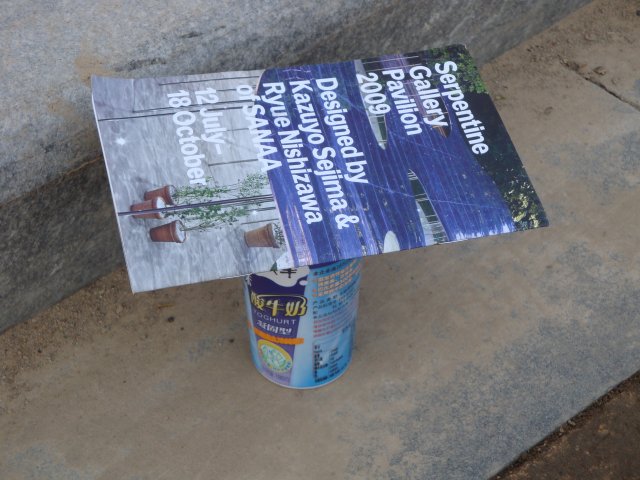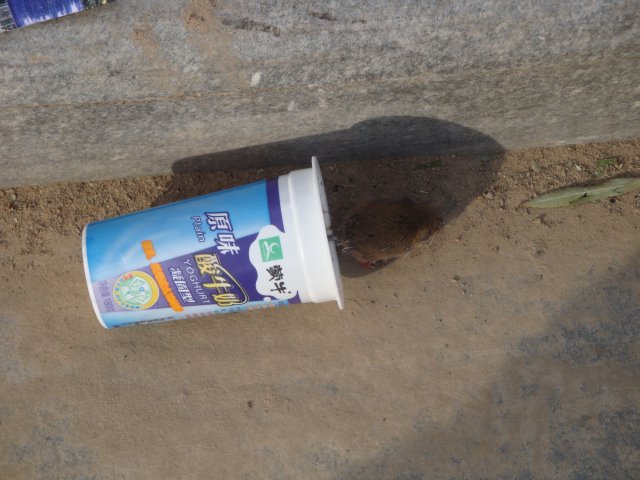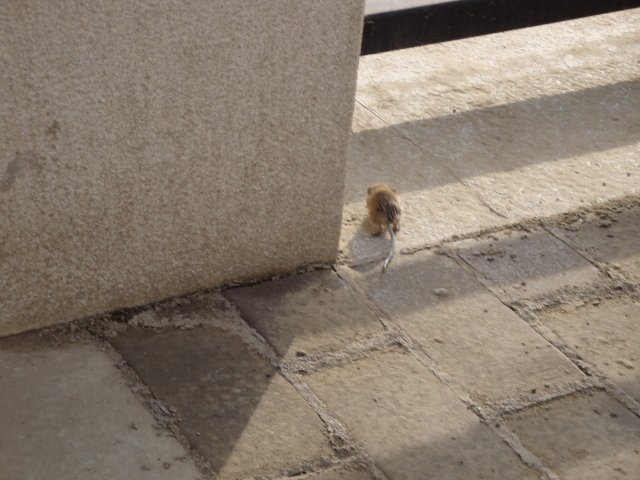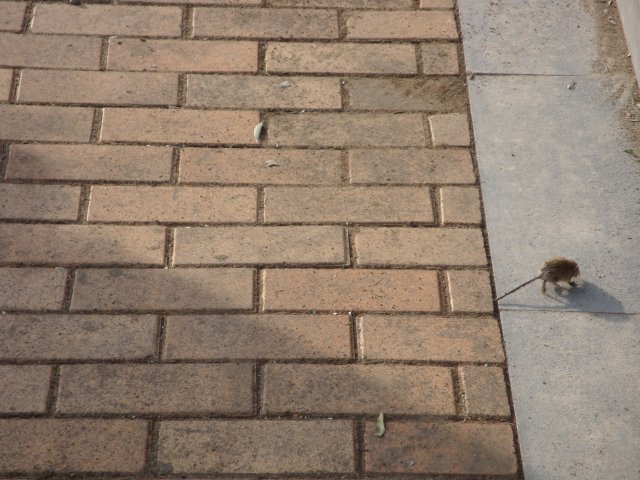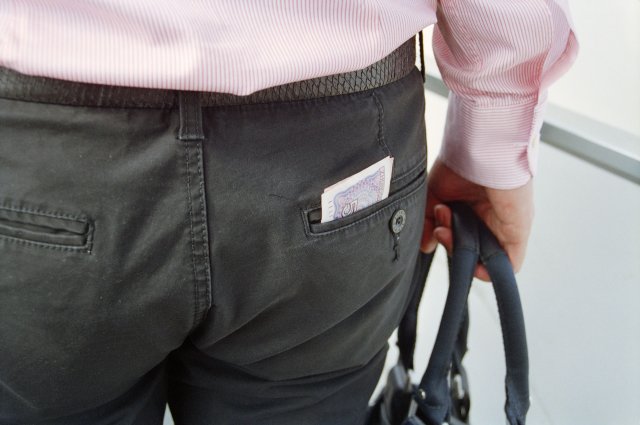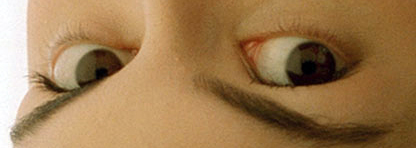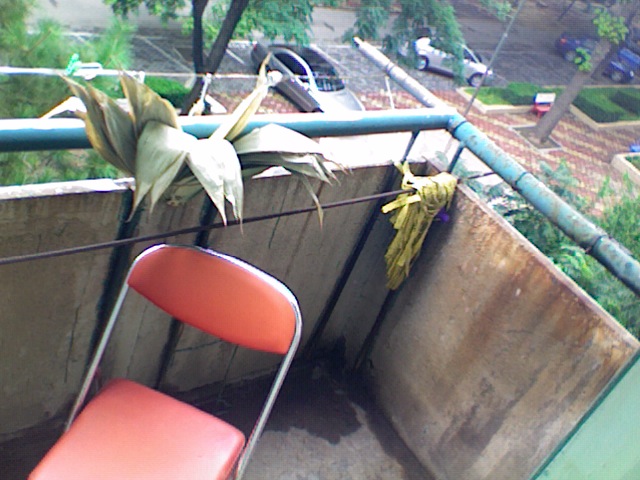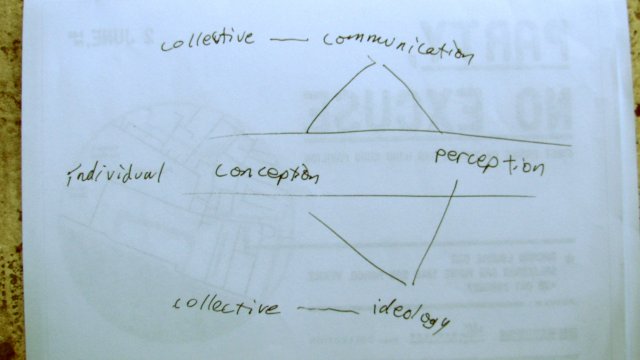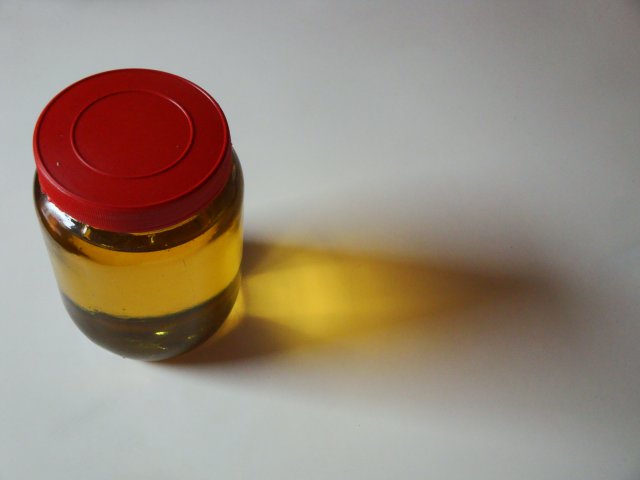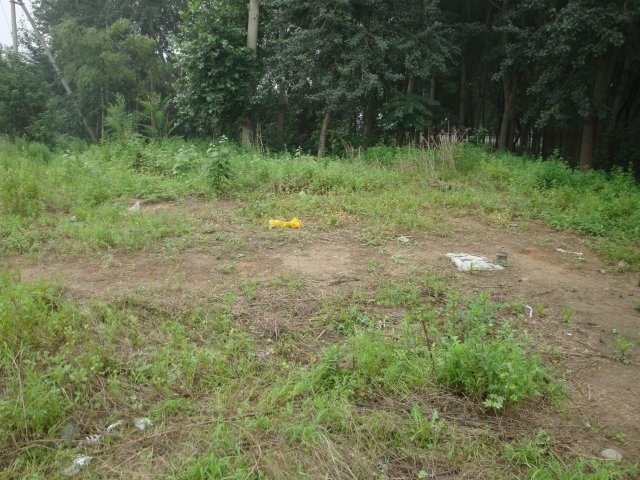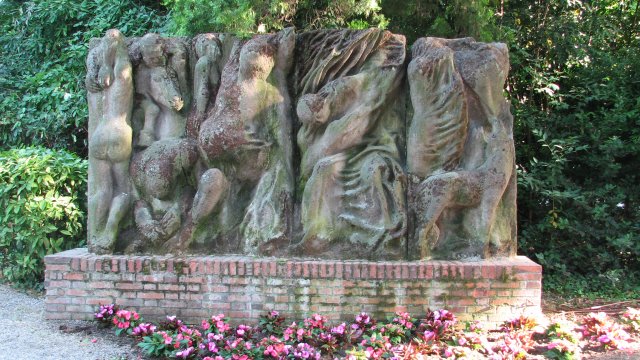(originally posted on the Vitamin Creative Space blog, 16/11/2009)
Logbook
Enthusiasts
I had a discussion with a friend about enthusiasm, within a discussion about alienation (for instance, the splitting of oneself between one’s work and one’s job) – a type of enthusiasm that burns through categories, making one’s work in general total, unfragmented, all over the result of one mind, a unified will. Then is one not only not an artist or architect or writer or baker, but one doesn’t even make art, design architecture, write or bake – one produces – perhaps it could be called producing oneself, since all other categories are externally decided divisions. My friend regarded enthusiasm as the most important part of his work (pausing for a moment to ask me where the Michael he knew had gone, the one who smiled and played the drums in his studio). If skepticism and doubt are considered conservative traits (and they usually aren’t) then I suppose in the conversation I appeared as a self-preserving or gullible person who would maintain the distinctions and classifications so as to feel a sense of order and control; to preserve the world the way it has been handed to me in order to not get lost in an indeterminate and unfamiliar, new place. Where imagination and ideas patrol like devastating, formless, productive cyclones. I am not so sure that repeating or reiterating these titles – putting on the guise of one of these roles – or doing/performing these actions while denying the titles or identities (which still describes a thing with its associations) – is conservative. I likened it to the idea of the experiment: (perhaps temporary) assumption of an identity “other” than our own, which perhaps seems to presuppose a certain claim to self-understanding and also objectivity and distance, but is a way to experience something “else”.
In light of enthusiasm, a character is an awkward and extraneous obstacle, a bit of ornament, or a growth to be worked on therapeutically. It is an excuse to dampen enthusiasm (“that other one is in my way”) or to deviate irrationally (a turn of direction, an external influence, the assumption of a position), a choice or fragmentation or relativism because this other character or this character (being one) offers its set of behaviours and habitat as traits, externalities to try on, settle into, rebuke or throw away. As a tool for thinking, characters bring with them in codes and chains and even whole bodies the resources to measure associations and those tendencies we take as given components of our identities. A character has to play wholeheartedly, however, otherwise it risks showing us nothing but tactical manoeuvres (though these motions, these deviations could be profitable or not, could be advances, or breaks, in a rising trajectory) – maybe not wholeheartedly but at least completely superficially, covering every curve; again, risking the implication of a centred perspective, that one knows who one is, beyond all the characters. The commitment that gives enthusiasm its good name is not avoided through this logic, but for better or worse desire can become confused. We can stray and warp, and we don’t necessarily return to an original, a true position. We return to an alienated position, but clearer as alienated through the character’s lessons.
(originally posted on the Vitamin Creative Space blog, 07/08/2009)
Amélie
Undertaking such activities as sewing together a bunch of banana leaves discovered in plastic under my bed in my new apartment and installing the assemblage on my balcony to give something for the neighbors to look at; I suddenly find a pair of eyes staring at me from within my conscience: those eyes belong to Amélie.
She performs only for herself – she makes art projects that are private and not art,(1) though her projects have almost homeopathic effects. There is a discipline to her distractions, a retaining of commitment to childish games; because of this and her big eyes, she looks like a little girl. Her mischief to help others by some twist is also a commitment to her body and health, there is nothing desperate about her. That is why we hate her.
We also make art at home. We sometimes wonder why our lives don’t have theme music and magic, and we wonder and wonder and think and think, while Amélie acts decisively on numerous self-improvements, like some innocent conceptual artist.
We also make artwork in our daily lives, small changes to our environments, modifications to our ‘communities’ – but then we document it, distancing ourselves from the effects. Not Amélie. Her clandestine aesthetics circulate in the realm of concrete but tacit results. Everyday life is the medium, but the message remains embedded in a life, in a lifestyle, in a narrative.
Somehow, as if cursed with the gift of clairvoyance, we have access to this narrative – we witness this private world as if we are right there, jaundicedly scrutinizing her happy-go-lucky attitude, her silent deeds, her flirtations with oblivion; we forget about the distance entailed as the necessity of its being made visible. It’s a film, after all. We are caught wanting Amélie as a role model while knowing she isn’t pure (this consideration takes place slightly prior to the consideration that she isn’t real).
My banana leaf fan curls anemically and looks atrocious; I have no desire to see that movie again.
1) I remember a young performance artist telling the audience at a presentation in Kassel, Germany about a performance in which she would hold onto the sleeve of an unwitting person in a parking lot, letting go only after an unpredictable but supposedly non-arbitrary length of time. She explained nothing to her temporary host. Surely this was art – but at what point did this gesture become art? Only when she told the audience about it. But nobody in the audience remarked on that. Marina Abramovic, on the panel, said “It sounds like a very intense piece.”
(originally posted on the Vitamin Creative Space blog, 23/07/2009)
Keywords School in the Giardini of the Universal
It is evening and Xu Tan pops his head into my room. I am on my bed, producing a watercolor. He says, excuse me, gentleman, can I ask you something? Yes, sure, what is it boss, I answer.
I wanted to ask about the word ‘efficiency’.
Well, that’s an awfully big word.
Xu Tan sits down. Does it have something to do with reason?
I suppose reason can lead to efficiency, but there is a related concept, rationality, to rationalize, that is more relevant I guess.
Xu Tan nods. Remember that Keywords School participant from Israel, the performance artist, she protested that keywords are too efficient. To her that was a problem.
Yes, I remember, I was glad she challenged the format we had been using. I see her point, but I always thought that keywords had a double potential: one to cut short discussion, to dumb down an interaction to assumed understanding; and the other to invite elaboration, if one took the time to be aware of the way the keywords were used.
Xu Tan nods again, his hands look as though they are practicing new gestures. He says, keywords are approximations; the keywords way is through approximate understandings; we almost understand. Actually I don’t think keywords are true or correct. We had an Italian who explained to us his interest in the project, which he noticed was also inscribed into the physical “structure” of the school, was that words form an endless chain sequence “sign signifying a sign signifying a sign…” (in Italian, the more effective “significante significante significante…”).
I think about this tunnel to infinity and my brain hits an obstacle: But somehow the discussions were still about things. Maybe not truths, but things anyway.
Suddenly I remember the day we finished installation and Xu Tan, looking at the school structure and the perky white-board sign I had just written on that announced courses, wondered aloud if it looked like a missionary camp in the jungles of Vietnam.
We were talking about politics, and society, and translation, I point out, as I feel a shadow of doubt creep over me as to whether those were really signs, or things as I had just claimed.
Yes, we had some good discussions, he agrees.
I realize that despite the similar routine I had heard new things each day, and was rarely bored. One American participant, I continue, had given us the keyword “sparse”, because of its aesthetic meaning for her. She said that it’s important because it represents a certain type of English word that is short and dense but has a very specific meaning; as a keyword that is completely inefficient I think.
Yes, we heard many interesting things that will be good for my research, he says.
People often asked what the research was for; I suppose that was more the visitors, as opposed to the participants, who kind of understood directly through the practice of talking (although who knows, and some even snuck away). For some of these visitors, I can imagine the image of information they saw, the title of ‘School’, and maybe its location near the café, independent in the Giardini, confused many people who didn’t recognize these forms as ‘art’; on the other hand, if they identified it as an educational device (some were delighted we seemed to be offering Chinese language courses in the Biennale, as if a wry comment on language dominance), or a quasi-NGO, maybe they didn’t see it as efficient.
Xu Tan smiles, yes all of these people who called me teacher, but actually they were teaching me. The title “Keywords School” is also approximate, as there are really no students or teachers in that sense of school. I would tell people it is more like a workshop.
Yes, but I also think the word workshop is a bit misleading too, because it makes you think that you are there to learn a skill, and if I think about it as an art piece, as a participatory art piece, that requirement of getting something out of it becomes less important. It is like maintaining a certain frame of mind for a certain amount of time, so to me there was something performative about it.
Xu Tan holds up a finger, yes, but in a workshop you can also produce something, which is what we were doing.
That’s true, and there is a difference between this production and for example just sending out emails asking for keywords. This difference is so important for the project, maybe some visitors who saw it as just a database of keywords didn’t realize this.
But that’s okay. Because to me as long as the research is interesting it’s good. And some days we had just a couple of participants but the discussions went so deep. That is very important.
That was what was interesting about the Venice Biennale as a context for producing this project. You would have expected that we would come out with a kind of keywords Esperanto with limitless participants from all different parts of the world, and indeed the sign up sheet looked like a rainbow, but the context in reality is somewhat different. Many people’s plans changed. I think this is in fact such a big part of the project that has to be considered for next time. An institution needs specific kinds of connections with an appropriate public for this piece – I am not sure if you would consider this an actual aspect of the piece, how it fits or doesn’t fit with institutions…
Xu Tan pauses, then says, no, I don’t think this is a necessary part of the piece.
Then we eat dinner and enjoy it because He Cong is cooking.
(originally posted on the Vitamin Creative Space blog, 29/06/2009)
Runny Honey
An obscure amount of time ago, a mysterious bee farm materialized on a sliver of land next to an overpass of the 5th Ring Rd. One day while on my daily commute, approaching the boxes, seemingly busy with bees, I looked upon the large containers and asked about acquiring their smallest jar. Asking what source the bees were collecting their pollen from, the apiarist indicated mostly trees, which seemed pretty reasonable. Because of the heat, the honey was loose as water and had an ambiguous sweet scent; I paid 26 Yuan for my 500grams and continued on my way.
Opening the jar at the office and tasting the substance for the first time, it became clear relatively fast that it was at least in large part not real honey, but some compound of sugar syrup and flavouring. It also didn’t thicken, and remained a viscous watery solution.
Some days ago I rode by again to find the whole enterprise had simply disappeared.
The bottle sitting in the office is now only a bulky golden trophy of willingness on both sides of an exchange; to make believe, and to believe; in making something from nothing and individual inventiveness, in experimentation and variability and all kinds of adventures. Now no longer even a mysterious substance whose origins are a mystery, it is simply a charmingly coloured unuseable residue; as a luminous, urinary-ethereal illusion, it glows and is a reminder of itself.
(originally posted on the Vitamin Creative Space blog, 17/07/2010)
Side Dish
After graduating from NSCAD, I began planning a road trip across the United States to reach the West Coast. I thought that it might be an idea to try and contact artists whose work I thought was interesting, and if nothing more, just visit them. It was a very naïve notion, I confess. When I tried finding their contact information, enquiring through galleries or university faculty lists, I would only receive answers from assistants. At the time, I was surprised; I just had no idea how this thing works. It occurred to me at the time – but I failed to act on it then – that instead I could just meet these assistants.
Only much later did I understand who assistants are, being not only useful individuals to the realization of artworks, but a parallel world that corresponds as well as struggles with the world of the artists (the world that we learned about in school). Having worked for several years in assistant jobs, and alongside other assistants, I am very much interested in how others understand the position. At the Venice Biennale, I again met many interesting young artists working for the installations of other artists, bringing up the idea to ask some friends for accounts of this job. Below are just a few. I hope to continue this discussion, and welcome others to send me their opinions.
**********************
working as an assistant has simply been the search for money. it has never benefited my own work nor have i ever felt it compromised my position by working for others. the benefit of working as an assistant is the lack of conviction usually alloted to the assistant and in my case, a lack of a long term commitment. it helps month to month. it has been a rarity while working for another artist where i identify or even support the work that is being inevitably produced. my hands are offered, not my opinion, and that is all i am really willing to offer. there was a time where i thought that construction from assisting jobs was starting to enter into a direct commentary on my life as on artist and i started to think about christopher de’arcangelo’s practice as an artist and a construction worker…
i recently assisted S___ on a project of his… which involved a trip that i didnt want to be paid for. and in this particular case, i did feel a greater connection to the artwork, and maybe resultantly had no interest in being paid for it. maybe the payment itself creates the disassociation, the wall the assistant hits while the artist keeps on going..
i know these answers aren’t profound, and if you are going to publish it, please don’t use my name!
*********************
Of course I remember our conversations in Yokohama about the ‘Side-Dish’ show, or making an assistants show, I still think it could be funny, although for sure one needs more of an angle than showing the ‘second-class’. Hmmm, about your questions, I guess they have to remain anonymous since people could maybe lose their jobs if they speak their minds.
As for me, well yeah, I don’t do too much assistant work as you mentioned, more making their websites and catalogues and what not, so at least you have the relationship of a kind of ‘expert’ and not like in Yokohama, where there was clearly more hierarchy involved.
My own artwork doesn’t really benefit from my design work (for design I author everything via a studio name to keep my proper name out of it, and also not to confuse Google searches and what not.) For sure you can meet some people, and they find out you also make work, but it’s been my feeling that they prefer you keep it professional and not bring too much your own art stuff into the mix. So basically in order to keep a good client relationship to get money, I generally keep my own things and interests out of the discussion.
It would be interesting to ask people who really do work closely with artists / art institutions these types of things. I think the idea is that you can get some experience and exposure, but often, you become too ‘useful’ for the person or the org. and they end up not being able to perceive your practice in any other light beyond being useful somehow. I’m just in Switzerland now (again design job for a museum project), but one of the technicians here for example makes all of J___A___’s work, I mean since years and years, and he works as this museum technician, so that’s what I mean in terms of getting pigeon-holed into a certain role.
************************
Without a niche (a niche niche)
The broad-daylight operator with many skills and a firm, able grasp of English (and other languages), with people skills and studied gestural appropriateness, wit and levity, an eye for aesthetic forms and a founded and running knowledge of art history, a fair knowledge of political affairs (and some catching up to do in history), a philosophical basis that holds itself upright, acquaintance with cookery, culturally experienced and travelled, sympathetic with the losers, critical at opportune moments, vague at the sensitive ones, rebellious a little too often but a hard worker and team player nonetheless: such a set of attributes will have you arrive at a job in your chosen profession, with an amount of creative flexibility and mobility. The only drawback is that because it is such a general set of characteristics, the person it describes will never be invited to join any exhibitions or panel discussions. Having no particular acumen or idiosyncrasy, no “subject”, this operator can be said to be in a sustainable position because these skills are valuable when transferred to any position or project, and (if truth be told) can lead in a direction of individuation – because of the creative nature of the character, because of its proximity with the author, its potential overtaking of the author – but sustainability can easily be imagined as stasis.
****************************
OK, so my plan to write you last night failed because a friend of mine was in desperate need of comforting and I had to provide food and good words for her inexplicable grief. Good enough excuse? I’m gonna steal time from __ in order to answer your question instead.
I’ll try and order my thoughts about this subject as best I can, as I think that authorship is a great topic to be examining, but I might be more jumbled than is useful to you. Maybe I’ll just try answering your questions directly:
Q: Could you describe an occasion when you have been involved in the manual process of making someone else’s artwork?
A: I’ve worked for a few artists on various pieces, bits and bobs really, but my most prolonged experience was with a stone carver who worked in small town Canada. This type of practice is probably less controversial than, say, a painterly one, because the manual tasks involved to get a stone to the ready are more similar to stretching and priming a canvas as opposed to actually being responsible for the draughtmanship and paint application (and then, as it was in the Renaissance, having the master do the face, hands, and signature at the final stage).
Working directly for an artist, however, is the same as any human relationship – there is a gradual understanding of that person’s interest, ability, and creative personality, which tend to dictate (depending on the interaction of those factors with your own) how much input is sought, proffered, considered and accepted from assistant to artist. In my case, I found the woman I worked for open to my ideas, and as she grew to trust me and my abilities (the latter being one of the critical influences in how much is left to the assistant) I was handed over more responsibilities. What was most important to note from the experience, however, was how, no matter what amount of hours I put into any given piece, and how much I felt some sense of ownership towards it, everything that came out in the end was emphatically not my work. Now, this may be because I trained as an artist as well, and Moore/Noguchi formalism isn’t my thing. The instructions from the artist meant that, whatever my contributions were, the construct linking all the pieces together was bound to be hers, and as such there was nothing but gratefulness on my part for teaching me certain skills and keeping my belly full.
Does this have anything to do with seeing people (assistants? workers? servants?) as instruments? A bulldozer operator working on the Sternenfall exhibition at the Grand Palais was told by Anselm Kiefer, in his imperious yet mischievous style, that “you are my pencil”. And proceeded to direct the destruction of one of his container towers the way a ballet choreographer would direct his corps.
Q: To what extent and in what ways was the artist involved?
A: Since her practice was on the mystical/personal side of formalism, the artist I worked for worked very closely with me on the direction of each piece. This hasn’t always been my experience with other artists, so I would say that to a great extent, this depends on the slant of their practice. It might be considered inauthentic, cheap, cheating or worse by some that contemporary practice involves what is, essentially, signing your shopping, but to some it is these questions of purity (and playing with same) that interest them most. Didn’t Benjamin accurately diagnose the loss of aura by the art object? Now imagine a generation of artists, post-Duchamp, post-Warhol, the majority of them reared in hothouse art school environments saturated with “theory” (the Frankfurters leading the charge), and their practice begins to make a lot more sense in terms of its use of prefabricated or otherwise outsourced production.
Working with artists indirectly, via a gallery, is different than working in their studio, mostly because there are more layers of red tape to wade through, but also because costs need to be approved on either side of the transaction. As a tech, you’re also removed from direct contact with the artist, which can sometimes be useful as insulation against day-to-day aggravation, but is also a hindrance because you don’t have the luxury time in which to plumb the depths of the artist’s head, therefore having to either guess or stall when the decision making is left to you. It’s a halfway house that can be very frustrating, especially when you’re working with somebody who is on a different continent.
I was charged with organizing the assembly of the concrete half of a piece by D__S____, and trying to create a relationship with him while at the same time managing to manoeuvre around the exhibition budget constraints was quite tricky, and I ascribe most of the difficulty to there being a five hour time difference between us. Clear communication becomes essential, and slow email responses, unclear directions or instructions, and lack of prep time all contribute to problems and delay. In the end we reached a concord, but the process was pretty gruelling.
Q: Any thoughts on the finished work? A sense of achievement or was this just a product of your day-job? Was your contribution acknowledged? Do you think it should have been? Do you think your involvement had any bearing on the authorship (or ownership) of the work?
A: I spoke about it in the answer to the first question: when the artist was directly involved, I felt pride in completing a task to the best of my ability, but no real sense of ownership or entitlement. You’re really just earning your place on the acknowledgement list in the catalogue. Is this true of artists who let you/get you to do most of the work on your own? For the most part I would say yes, because again, even if you’re entrusted to make aesthetic decisions normally associated with the ideal of the Artist As Romantic Genius, it’s not being presented as your own work, and the starting points in the development of the piece can be rather distant from where you yourself would begin.
Take, for instance, ____’s “Firmament”. I know the people who helped design it, test it, prototype it, and I helped assemble the final object (twice). Now, because I don’t work for his studio, my feeling when it was done, both times, was more of a “good job” feeling rather than a “look what I did” feeling – but I think that my studio friends tended towards the latter. After the first install we were all taken to a dinner by AG, which was appreciated, and certainly not the norm. I certainly feel that assistants should be acknowledged for their contributions, but they don’t really need to have their names on the museum information plaque. Apparently some would-be buyers of Hirst at his Sotheby’s auction were demanding to know the identity of painting assistants that worked on his FACT paintings, justifying their requests with “well, what if they become famous someday?”. That becomes interesting trivia perhaps, and maybe biographical fodder 50 years down the line, but I can’t see any tech or assistant I’ve ever known to insist on outward credit like that, no matter how responsible they might be for the final output. It’s like when you repaint a white wall white: the worst thing that can happen is that somebody notices that you’ve done it.
This is perhaps the symbiotic nature of artist/assistant: the artist needs the assistant to create the work, but the assistant needs the shield, the contacts, and the prestige provided by their association with a more established creative agent. This also brings to mind the idea of the artist as thief, and the most successful artists being the ones that can cover up their thefts the best. Artists constantly nick their ideas from history, both the capital-H kind and their own personal version, and it would be absurd to think that their assistants, especially the ones that they have long relationships with, don’t contribute to that latter history.
I can see I’m starting to ramble, so I’ll leave off with two art historical examples that come to mind, and that I’ve never really seen examined in depth and could be relevant (?):
– Jack Goldstein used a cadre of assistants to make painting in the 80s, and was viciously attacked for it, namely because it was unfashionable at the time. Was Hirst the first to make it cool again?
– Moholy-Nagy talked with a paint factory foreman to make his “telephone pictures” in the 20s.
So, I don’t totally feel satisfied with my loquacious answers, but it’s something, no? Please let me know if you want me to clarify any points, and the only acknowledgement I demand is a copy of the final dissertation.
That and you owe me, ahem, nine pints…
All the best,
N__
[written in response to a questionnaire by K___]
****************************
For one of them, I was almost a co-author as I was editing the artist’s video, and I also compiled soundtrack for it. The research for the soundtrack being the integral part of the piece, and the fact that the direction of this research was pretty much up to me somewhat made me feel closer to the authorship of the piece. However, I am inclined to think that that is an illusion. I wouldn’t have done anything like it if I wasn’t getting paid to do it.
For the other job, I was helping the artist’s performance, looking after live video mix. That was very straight forward, I did what I was told to do.
As I said, being a student of both artist before working for them made my relationship to their works less complicated in terms of possible influence I was getting or feeling of being less successful as an artist compare to them etc. As a student of those artists, those questions became somewhat irrelevant. For instance, it’s natural to be influenced by your teachers.
I think it’s pointless and misleading to have a sense of authorship to the works you assisted. The economic relationship you have to your boss, and the manager/director position he/she takes is enough to make this point unambiguous. Otherwise, an art work turns into a dubious utopian project, e.g. Yona Freedman.
In terms of exposure/contact, hell yeah, being an assistant of successful artist helps big time. I can think of one or two examples around me, though I am not going to name names. Since I never had an assistant work as a regular job, I can’t really say how long I want to continue, but I can imagine myself doing that for a couple of years. I don’t mind having art related work as a money job. My own practice is also directed toward commerce, so no contradiction there.
I think one important aspect of assistant job, at least for me, is the fact that it is often the only available employment for young artists living in foreign cities where they don’t speak the local languages. I think this trend will continue as artists become more and more flexible and uprooted in their career management. You are an extreme example of that, I think.
I can’t really think of assistance in terms of its interest. It’s a structural necessity in keeping the art trade going the way it is at the moment. In that sense, it’s an interesting subject to think about in order to understand the structure of art making.
****************************
historically, a lot of well known artists owe at least a part of their success to older artists who they worked for as assistants. Think of isamu noguchi (who worked for brancusi) or michael krebber (kippenberger), for example. whether this is to be expected or not, i don’t know because i’ve yet to see it happen.
assistance in art is both interesting and relevant, michael, and i’d be happy to elaborate on some of what i’ve written and answer some of the questions that i ignored if you want me to. let me know, though, if this is what you are looking for.
by the way, how was venice?
